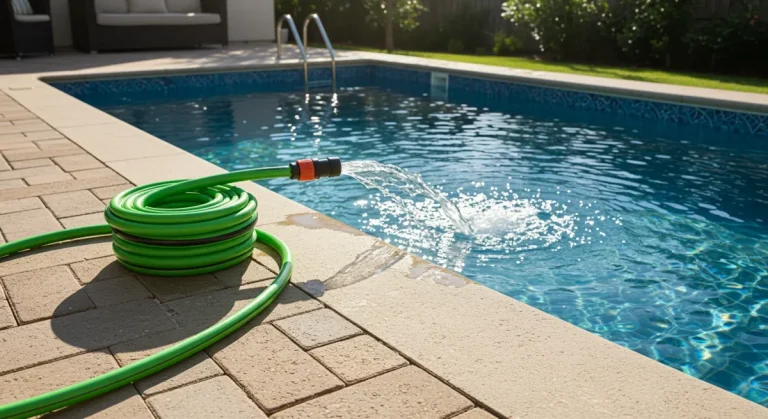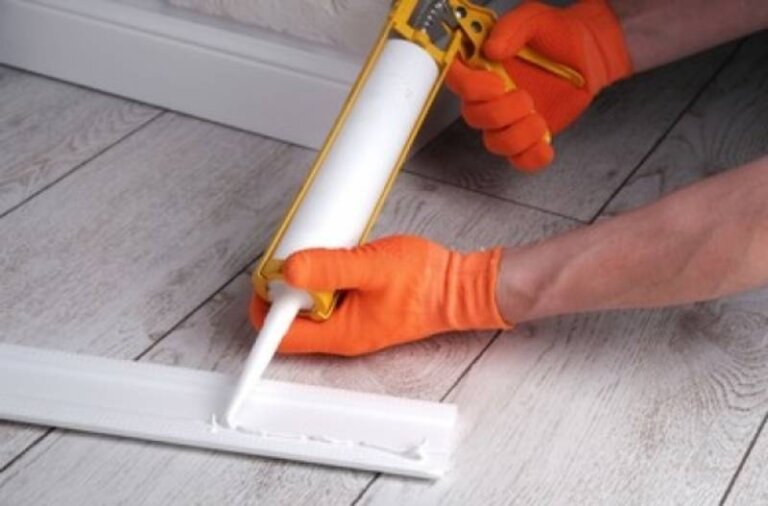How to Safely Get Paint Off Any Vinyl Floor (Without Causing Damage)
That heart-sinking moment when you see a splash of paint on your beautiful vinyl floor is a familiar one for any DIYer. Whether it’s from a weekend painting project or a small touch-up, your first thought is probably about how to get it off without making things worse.
Don’t worry. You’ve come to the right place. Most paint spills, both wet and dry, can be removed from vinyl flooring using simple household items you likely already have. The secret is to match the cleaning method to the type of paint and to act with a little patience.
Key Takeaways
- Act Fast on Wet Paint: For fresh spills, the best strategy is to act immediately. Gently blot the wet paint with a damp cloth to lift as much as possible before it starts to set.
- Scrape First, Always: For dried paint, your first step should always be to gently scrape off the excess with a plastic putty knife or an old credit card. Never use a metal scraper.
- Water-Based Paint Solution: The most common paint types (latex, acrylic) usually come off with just warm, soapy water and a soft cloth. For more stubborn spots, a little rubbing alcohol is your best friend.
- Oil-Based Paint Solution: For tougher oil-based or spray paints, use mineral spirits applied sparingly to a cloth, not directly to the floor. Always test in a hidden area first and make sure the room is well-ventilated.
- Safety Check: Never use harsh abrasives like steel wool or potent solvents like acetone or paint thinner. These will cause permanent damage to your vinyl’s protective finish.
Safety First: Before You Touch That Paint Stain
Before you start scrubbing, taking a few moments to prepare can save you from a costly mistake.
Gather Your Tools:
- A plastic scraper (a putty knife, old gift card, or plastic spoon will work)
- Soft, clean cloths or microfiber towels
- A small bucket of warm water
- Mild dish soap
- Isopropyl (rubbing) alcohol
- Mineral spirits (for oil-based paint only)
- Protective gloves
The Golden Rule: Test in a Hidden Spot. Before applying any cleaning agent to the stain, always test it on an inconspicuous area of your floor. A spot inside a closet, under a sofa, or behind a large piece of furniture is perfect. Apply a small amount of the cleaner, let it sit for a minute, and wipe it away to ensure it doesn’t discolor or damage the floor’s finish.
CRITICAL SAFETY WARNING: The Asbestos Risk in Older Floors. This is a non-negotiable safety check. If your home was built before the 1980s, your vinyl flooring could potentially contain asbestos. According to the U.S. General Services Administration (GSA), older vinyl tiles can be hazardous if disturbed. Aggressive scraping, sanding, or breaking the flooring can release these dangerous fibers into the air. If you have any suspicion that your floor is that old, do not attempt to scrape it. It’s best to consult a professional for removal.
Method 1: Removing Fresh, Wet Paint (The Easy Win)
If you catch the spill right as it happens, cleanup is much simpler.
- For Water-Based Paint (Latex/Acrylic): Gently blot the spill with a damp cloth, working from the outside in to prevent spreading it. Once the paint is up, wipe the area with a cloth dipped in warm, soapy water. Rinse with a clean, damp cloth and dry the spot completely.
- For Oil-Based Paint: Blot the fresh spill with a dry cloth first to absorb the excess. Then, lightly dampen a separate clean cloth with mineral spirits and gently wipe the remaining paint away. Follow up by cleaning the area with soapy water to remove any oily residue, then rinse and dry.
Method 2: Removing Dried Water-Based Paint (Latex & Acrylic)
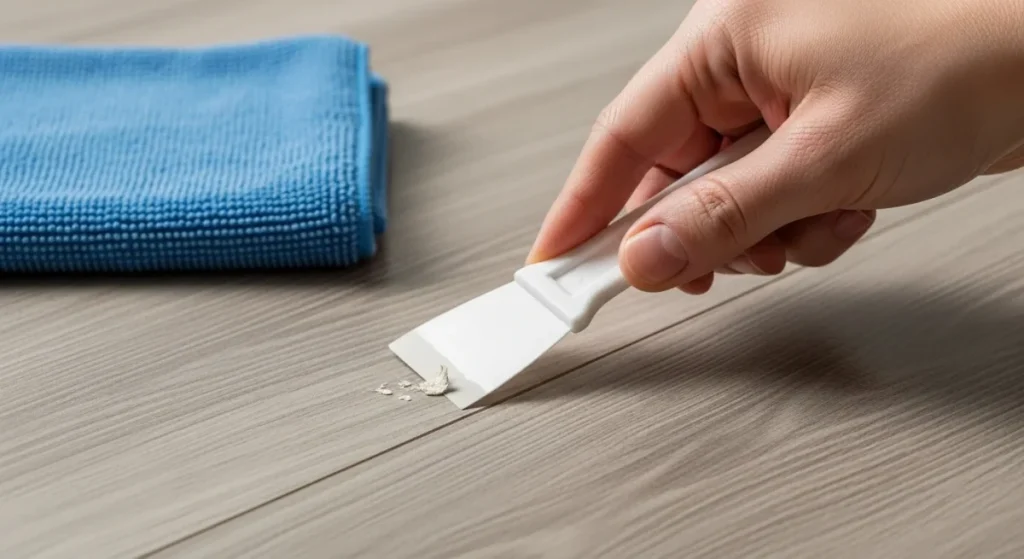
Did you discover the paint splatter after it already dried? No problem. This is the most common scenario, and it’s very fixable.
Step 1: Gently Scrape the Surface. Take your plastic putty knife or credit card and, holding it at a low angle, gently push into the edge of the paint drip to lift it. The goal is to get the bulk of the dried paint to pop off without scratching the floor. Apply steady, gentle pressure.
Step 2: Apply Warm Soapy Water. Mix a few drops of dish soap into a bowl of warm water. Dip a soft cloth into the solution, wring it out, and lay it over the remaining paint stain for a few minutes. This will help soften it. After letting it sit, use the cloth to scrub the area gently.
Step 3: Use Isopropyl (Rubbing) Alcohol for Stubborn Stains. If soap and water don’t get it all, it’s time for the secret weapon. Apply a small amount of rubbing alcohol to a clean cloth and rub the stubborn paint spots. You should see the paint begin to break down and lift onto the cloth.
Method 3: Removing Dried Oil-Based & Spray Paint
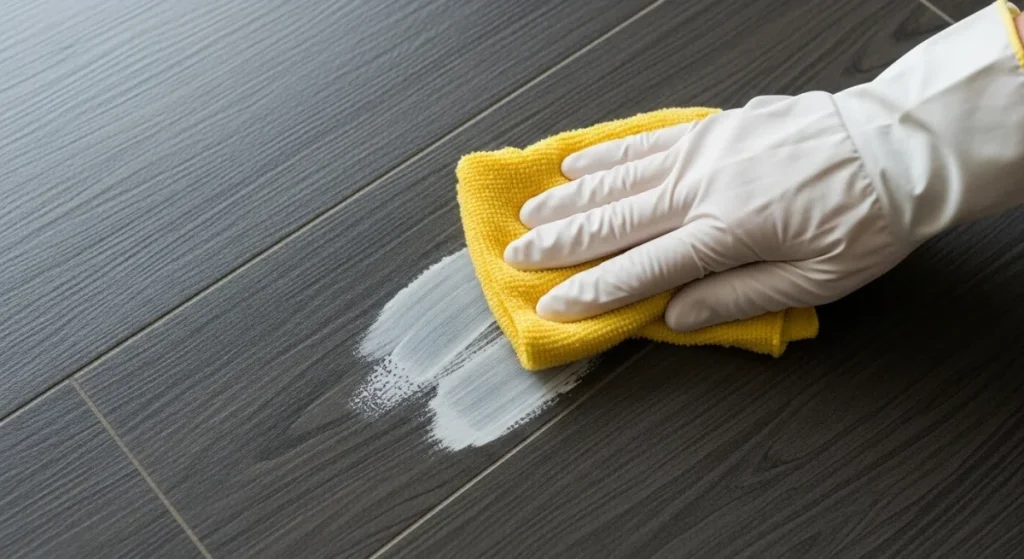
This type of paint is designed to be durable, which makes it a bit tougher to remove. But it’s still manageable.
Step 1: Scrape First, Just as with water-based paint, your first action is to remove as much of the dried paint as possible with your plastic scraper. This mechanical removal does half the work for you.
Step 2: Carefully Apply Mineral Spirits. This is where you need to be cautious but firm.
- First, ensure you have good ventilation by opening a window or door.
- Next, put on your gloves.
- Apply a small amount of mineral spirits to a clean cloth, not directly onto the floor.
- Gently rub the paint stain in a circular motion. The solvent will begin to dissolve the paint. You may need to switch to a clean section of the cloth as the paint lifts. This process is different from removing a thick adhesive, like how to remove liquid nails, which requires a different approach to dissolve the bond.
Step 3: Clean the Area Thoroughly Once the paint is gone, it’s crucial to clean the spot with warm, soapy water. This will remove any lingering oily residue from the mineral spirits and restore your floor’s clean finish. Rinse with a damp cloth and dry completely.
What NOT to Use on Your Vinyl Floor (Avoid These Damage-Causing Mistakes)
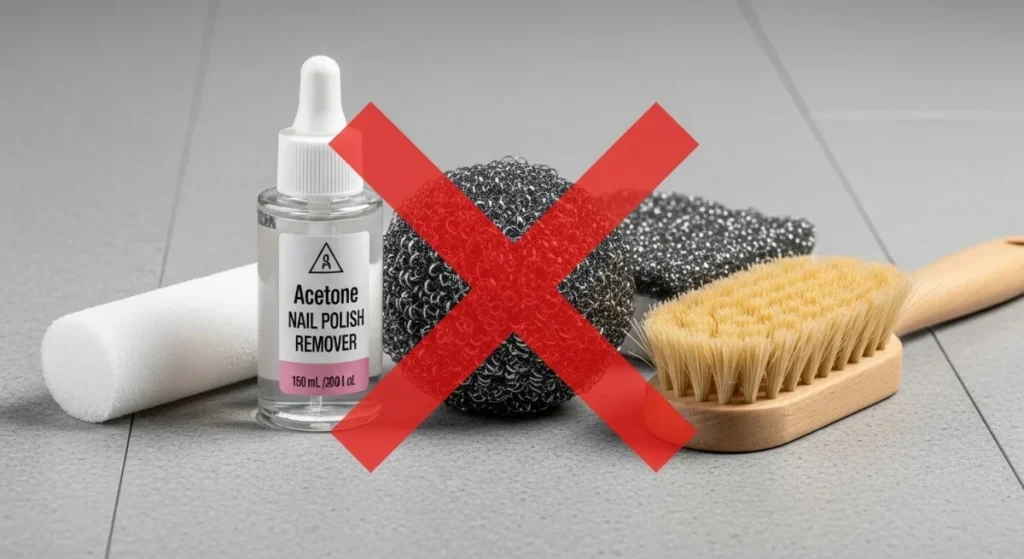
You can save your floor by knowing what to avoid. Putting the wrong chemical on vinyl can cause irreversible damage.
- Harsh Solvents: Never use acetone (nail polish remover), lacquer thinner, or turpentine. They are far too aggressive and will effectively melt or “eat” the vinyl’s protective wear layer, leaving a permanent dull, sticky spot.
- Abrasive Scourers: Stay away from steel wool, scouring powders, and stiff-bristled brushes. They will leave a web of fine scratches on your floor’s surface. Just like you wouldn’t use the wrong cleaner on a delicate how to clean a kilim rug without damaging it, your vinyl floor needs the right care.
- Ammonia-Based Cleaners: While great for some surfaces, cleaners containing ammonia can dull and break down your vinyl’s finish over time.
Frequently Asked Questions
Will paint thinner or turpentine damage vinyl flooring?
Yes, absolutely. These are aggressive solvents designed to strip paint from wood or metal. On vinyl, they will dissolve the plastic material itself, causing permanent damage to both the texture and color.
Can I use a Magic Eraser to get paint off vinyl?
For small, light marks from water-based paint, a Magic Eraser can work. However, it is a micro-abrasive. Use it gently and with water, and always test it in a hidden area first, as it can dull the finish on some types of vinyl.
Does WD-40 or Goo Gone remove paint from vinyl?
These products can sometimes work on certain types of paint because they have an oily base that can loosen the bond. However, they are not always effective and will leave an oily residue that needs to be thoroughly cleaned with soap and water. For dried oil-based paint, mineral spirits are a more direct and effective solution.
Will rubbing alcohol or white vinegar damage vinyl?
Rubbing alcohol is generally safe for spot-treating paint on vinyl and is very effective. Diluted white vinegar is a fantastic, safe, all-purpose cleaner for vinyl floors, but it typically isn’t strong enough to remove dried paint stains.
Pro Tips to Protect Your Floors During Your Next Project
A little prevention is worth a pound of cure.
- Before starting any painting project, cover your floors. Use painter’s tape to secure rosin paper or a quality drop cloth.
- Keep a damp cloth handy to wipe up any spills as soon as they happen.
- Whether you’re tackling a big task, such as installing new vinyl plank flooring, or a small one, like painting a toilet seat, taking a few minutes to prep the area is key to avoiding cleanup headaches later.





